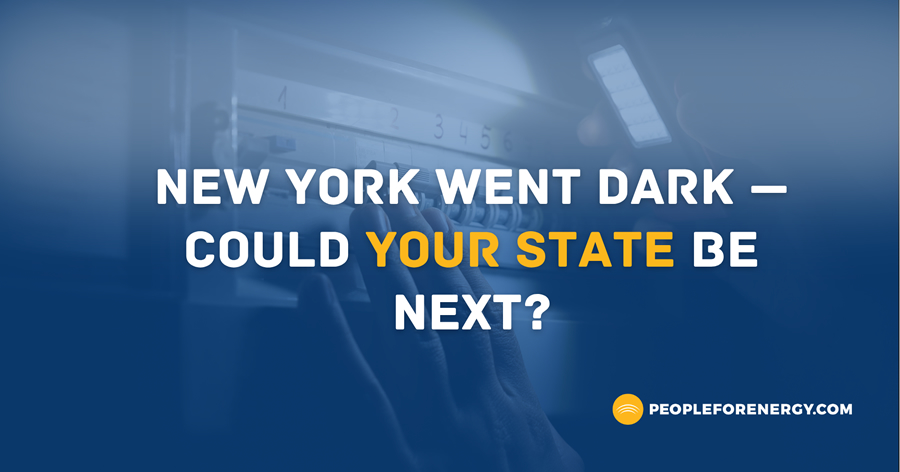When the power went out in parts of New York City this week—during a dangerous heatwave—families were left sweating in their apartments. Businesses had to shut down. Elevators stopped. Seniors were stranded. And across the region, electricity demand surged to levels not seen in over a decade.
As more states push to electrify everything—homes, vehicles, appliances—we’re placing more strain on a grid that isn’t ready. And when policymakers move faster than the infrastructure can support, the consequences fall on the shoulders of everyday people.
A Real-World Example: New York’s Power Problems
Here’s what happened in New York this week:
- Blackouts hit neighborhoods as extreme heat sent
- System-wide demand , prompting calls to conserve energy.
That battery was supposed to help balance the grid by storing excess wind and solar energy and delivering it when demand surged. Instead, it became a safety concern, just as the system needed backup the most.
This is exactly what happens when we transition too quickly, without the infrastructure to support it.
Why This Matters in Every State?
Even if you don’t live in New York, the lesson applies everywhere.
Across the country, states are adopting policies that ban natural gas in new homes and buildings, accelerate the retirement of existing power plants, and mandate electrification, without fully upgrading the grid or building reliable backup systems.
According to CEA’s latest report, The Importance of Natural Gas to Illinois, forcing families to go all-electric could cost a typical household more than $100,000 over the life of their home. That kind of burden is simply out of reach for most families—especially when many are already struggling to afford groceries, rent, or a car repair. Energy policy shouldn’t make everyday life more expensive.
When reliable power sources are removed too soon, and replacements aren’t yet proven or in place, . All it takes is one heatwave, one storm, or one equipment issue, and people lose power.
This isn’t about politics. It’s about making smart, common-sense decisions that protect the people who depend on energy every day.
Who Pays the Price?
- Families who lose power during a heatwave or can’t afford to replace spoiled groceries.
- Seniors and medically vulnerable residents who rely on powered health equipment.
- Small business owners who take a financial hit every time the lights go out.
- Workers who can’t do their jobs without electricity in stores, offices, or worksites.
The energy transition should not come at the expense of safety, reliability, or affordability—yet that’s exactly what rushed policy decisions can do.
Natural Gas: A Critical Part of the Solution
Natural gas has long played a vital role in ensuring reliability. It’s:
- Reliable when demand spikes—it can quickly provide power during emergencies or extreme weather.
- Weather-independent—it works when the sun isn’t shining and the wind isn’t blowing.
- Affordable—it helps keep energy bills manageable for families and businesses.
Yet in places like New York, policies are phasing out natural gas in new construction and discouraging its continued use, even as electricity demand keeps climbing.
The problem isn’t the intent—it’s the timing. We’re not saying don’t invest in clean energy. We’re saying don’t remove the power we rely on until the new systems are fully built, tested, and ready to perform.
Infrastructure Must Come First
If we want a cleaner energy future, and we all do, it has to be built on a foundation that’s strong, reliable, and affordable.
That means:
- Testing and securing battery systems before we depend on them for backup.
- Modernizing and expanding the grid before forcing full electrification.
- Keeping
- Streamlining infrastructure , so upgrades and expansions can meet rising demand.
This isn’t about delaying progress—it’s about making sure it works for the people who need it most.
The Bottom Line: Practical, Not Political
New York’s blackout revealed the risks of pushing energy transitions based on timelines built to make headlines—not on whether the system is ready or people can afford it.
Let’s not repeat those mistakes.
Let’s put people first, with thoughtful, balanced energy choices that ensure power is available when families and businesses need it. That starts with honest conversations and practical solutions—not rushed policies or one-size-fits-all mandates.
Because at the end of the day, when the power goes out, it doesn’t matter how green your energy is. If it’s not there when you need it, it’s not helping anyone.
